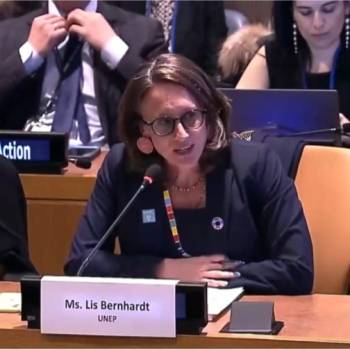
The green gold rush: How investment into synthetic biology could help achieve net zero.
- The intersection of biological and advanced digital technologies is poised to revolutionize biology’s role in creating more sustainable economies.
- Despite advances in underlying synthetic biology approaches, relatively few products have reached the scale required for mass market adoption.
- Rethinking financing structures to address challenges associated with scale up could bring more products to market at a faster rate.
Synthetic biology has significant potential to decarbonize the necessities of human life. It could be applied to what we eat (e.g., alternative and cultured proteins), the clothes we wear (e.g., textile fibres originating from engineered microbes), how we build our homes and workplaces (e.g., mycelium-based construction materials with enhanced carbon capture technologies), and even the way we travel (e.g., mobility powered by sustainable biobased alternatives).
Understood in the context of achieving net zero emissions, the successful application of synthetic biology is arguably less a question of science – though challenges still remain – and more a question of navigating a landscape of high initial costs, lengthy development timelines, and a lack of well-established pathways to achieve commercial-scale production and widespread adoption.
These examples are not science fiction, but could fast-become a pervasive reality when combined with advanced digital technologies – it is possible to conceive of a future where engineering biology can deliver high-impact commercial solutions that are less carbon intensive, resource restorative and sustainable by design. In a world where we remain disproportionately dependent on carbon-intensive chemicals for our clothes and drugs to energy and fertilizers, such alternatives are crucial.
Although improving our quality of life through synthetic biology holds significant promise, we remain far from delivering upon the vast promise: a relatively small number of products and solutions have successfully reached widespread market adoption and climate gains remain trivial when compared to their ultimate potential.
Challenges
Synthetic biology startups have long captured investor interest, with venture capital investment in this space rising steadily over the last two decades and surpassing $20 billion in 2021 alone (see chart). The significant capital flowing into synthetic biology ventures has gone a long way in enabling lab-scale operations – a necessary and important milestone on the commercialization roadmap. But funding models have yet to provide adequate solutions that address the unique attributes of reprogramming biology destined for commercial applications.
Significant obstacles must be addressed before lab scale synthetic biology solutions can more efficiently translate out of the lab and deliver meaningful impact. No single underlying cause is responsible for impeding synthetic biology-enabled solutions from leaving the lab. Challenges include an immature regulatory environment, lengthy product development timelines and high costs to commercialize, lack of established business models and go-to-market strategies, as well as inconsistent articulation of what is at stake versus the true potential of products made with biology.
To provide synthetic biology-derived solutions with a legitimate opportunity to deliver transformational outcomes, funding mechanisms should be revisited to provide right-sized support that adequately considers timelines and costs to commercialize. Resulting mechanisms could better position companies to deliver the groundbreaking, scalable and sustainable commercial outcomes they have largely failed to deliver to date. It is only upon translation to a commercial scale that synthetic biology solutions can deliver true impact and the real-world outcomes that have the potential to significantly improve our quality of life; increasingly successful commercial-scale translation of synthetic biology-enabled sustainable alternatives is a necessary first step in attracting new forms of capital, including from climate- or sustainability-focused investors and funds.
New funding models
Blended finance mechanisms and strategies have historically proven effective in channelling investment into companies that are today considered “category leaders” in the field. Specifically, a combination of dilutive and non-dilutive public, private and philanthropic capital have been successfully deployed to de-risk early-stage investments and prepare them for progressively lower risk capital entering the funding stack. A handful of synthetic biology companies have achieved success through initially bootstrapping via funding through government grants and related-funding agencies to de-risk the initial investment thesis and increasingly attract later-stage equity capital investors.
But the funding gap between early-stage, scale-up and late-stage funding rounds remains a key obstacle for many climate solutions-focused companies, including those operating in synthetic biology. There is increasing agreement among climate solutions investors that conventional investing across the capital stack will require greater amounts of catalytic capital to unlock increased private dollars and write larger checks earlier on. Yet effectively bridging this gap will come down to companies being able to deliver the following: demonstrate a clear pathway in achieving competitive unit economics for the products and services they deliver, validate sizeable market demand and consumer acceptance for these products, and, crucially, establish scalable production processes and distribution infrastructure to meet this demand for end-markets and gain widespread adoption.
Investors are rapidly scaling up investments in synthetic biology companies focused on sustainable alternatives to carbon-intensive incumbents recognizing that the field can be both economically viable and environmentally friendly, whilst contributing significantly to increasingly urgent global decarbonization imperatives. But realizing this potential will require founders to work simultaneously with multiple sources of capital, acknowledge the competing investment objectives of capital providers and more rapidly prove the scale-up thesis.
Acting now and rethinking how we invest and provide support for such high impact future technologies will pave the path towards a more resource-resilient and restorative future where biobased-technologies provide the basis for the workhorse commercial alternatives of tomorrow.
Article written by :
Habib Abdur-Rahman - Global Head of Sustainability, Investcorp
Brynne Stanton - Thematic Lead, Bioeconomy - Center for the Fourth Industrial Revolution (C4IR), World Economic Forum
Faisal Khan - Director, Precision Medicine Lab
This article is part of : World Economic Forum Annual Meeting
Sources :
- World Economic Forum
Posted on 2024-01-02 13:02








Comments